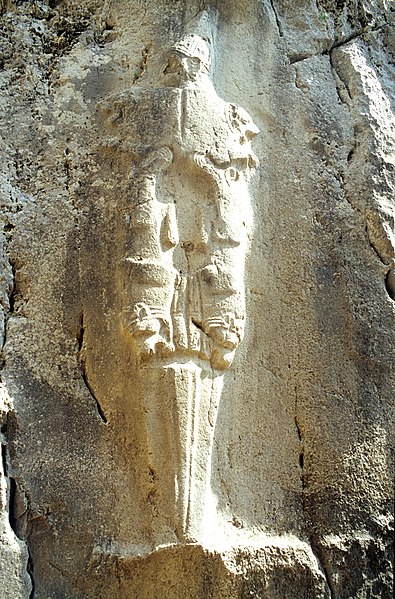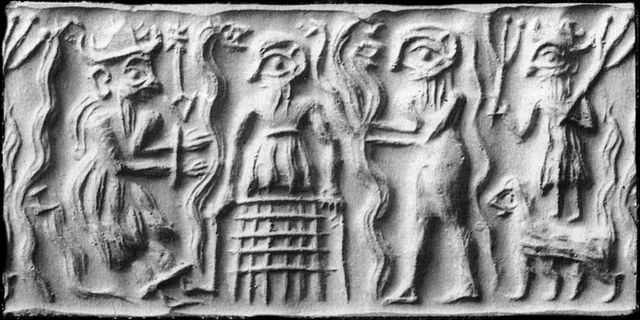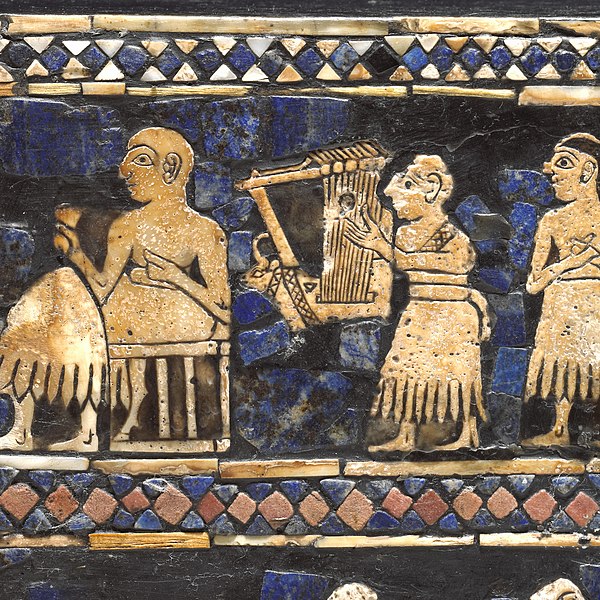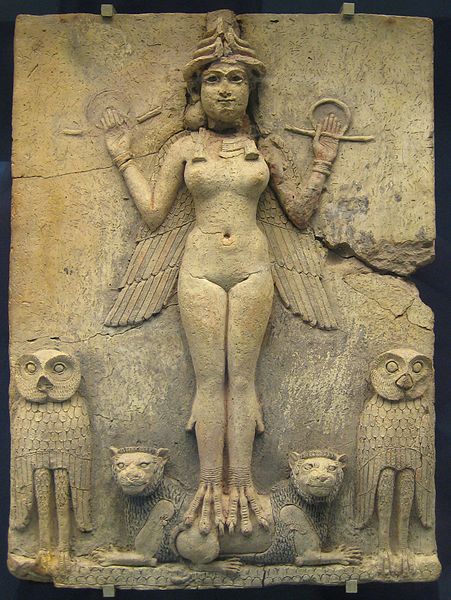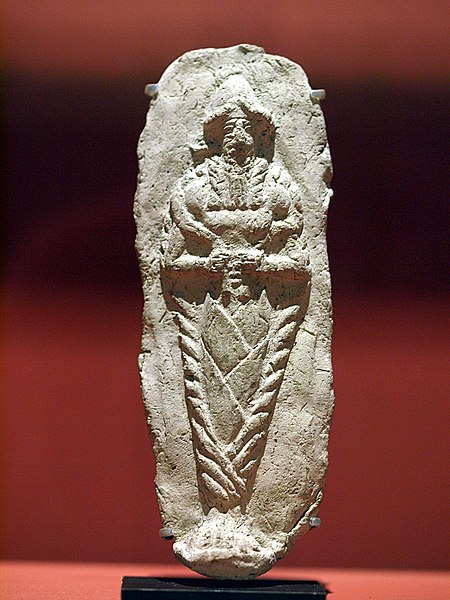Nergal was a Mesopotamian god worshiped through all periods of Mesopotamian history, from Early Dynastic to Neo-Babylonian times, with a few attestations indicating that his cult survived into the period of Achaemenid domination. He was primarily associated with war, death, and disease, and has been described as the "god of inflicted death". He reigned over Kur, the Mesopotamian underworld, depending on the myth either on behalf of his parents Enlil and Ninlil, or in later periods as a result of his marriage with the goddess Ereshkigal. Originally either Mammitum, a goddess possibly connected to frost, or Laṣ, sometimes assumed to be a minor medicine goddess, were regarded as his wife, though other traditions existed, too.
A symbol of Nergal on Old-Babylonian fired clay plaque from Nippur, Southern Mesopotamian, Iraq
A bull-eared deity, possibly a courtier of Nergal
The "sword-god" from Yazılıkaya, identified with Nergal
Syncretic Parthian relief carving of Nergal-Heracles from Hatra in Iraq, dating to the first or second century AD
Ancient Mesopotamian underworld
The ancient Mesopotamian underworld, was the lowermost part of the ancient near eastern cosmos, roughly parallel to the region known as Tartarus from early Greek cosmology. It was described as a dark, dreary cavern located deep below the ground, where inhabitants were believed to continue "a transpositional version of life on earth". The only food or drink was dry dust, but family members of the deceased would pour sacred mineral libations from the earth for them to drink. In the Sumerian underworld, it was initially believed that there was no final judgement of the deceased and the dead were neither punished nor rewarded for their deeds in life.
Ancient Sumerian cylinder seal impression showing the god Dumuzid being tortured in the underworld by galla demons
Detail of the "Peace" panel of the Standard of Ur from the Royal Cemetery at Ur, showing a man playing a lyre. The Sumerians believed that, for the highly privileged, music could alleviate the bleak conditions of the underworld.
The "Queen of Night Relief" (c. nineteenth or eighteenth century BC), which is believed to represent either Ereshkigal or her younger sister Inanna
Terracotta plaque dating to the Amorite Period (c. 2000–1600 BC) showing a dead god (probably Dumuzid) resting in his coffin



